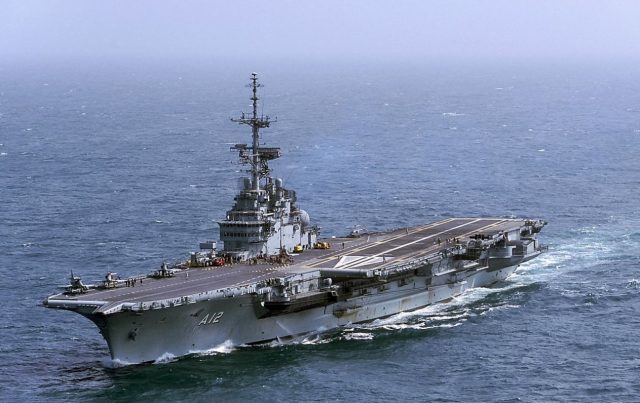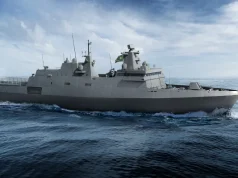The Brazilian Navy’s sole aircraft carrier São Paulo has been sunk in the Atlantic Ocean after spending years in limbo following its decommissioning.
Built for the French Navy in 1959, the former Clemencau-class aircraft carrier FS Foch was acquired for the Brazilian Navy in 2020. After it never received a much-needed overhaul, Brazil decided to retire the BNS Sao Paulo (A 12) in 2017.
Since it was decommissioned, the carrier was supposed to be towed to Turkey where it would be scrapped, but Turkish authorities blocked the move citing a violation of the 1996 Izmir Protocol (Protocol on the Prevention of Pollution of the Mediterranean Sea by Transboundary Movements of Hazardous Wastes and their Disposal), which prevents hazardous wastes from entering the Mediterranean Sea unless they are to be destined to an EU country for recycling or disposal.
What led to this decision was the fact that the aircraft carrier contains an estimated 760 tons of hazardous asbestos, more than 300 tons of material contaminated with highly toxic PCBs (polychlorinated biphenyls) and additional tonnage of heavy metal-laden paint.
This is according to the NGO Shipbreaking Platform, which said the ship’s sinking would “no doubt contaminate the marine ecosystem in the dumpsite area for years to come.”
The NGO Shipbreaking Platform was the one to notice discrepancies and irregularities regarding the amounts of hazardous materials onboard in the paperwork prepared before the export of the São Paulo to a recycling yard in Turkey in 2022.
Brazilian authorities refused to make any corrections and, instead, released the vessel in August. As the ship was almost ready to enter the Mediterranean Sea, the Turkish government, however, agreed with the environmentalists and withdrew its consent to receive it until a more thorough assessment of the hazards onboard could be independently conducted.
At that point, as per the Basel Convention on the Control of Transboundary Movements of Hazardous Wastes and their Disposal, Brazil recalled the ship presumably for safe management. Yet, when the São Paulo returned, rather than being directed back to the Rio de Janeiro base from where it had departed, the Navy refused to allow it to dock there or at any other Naval base.
Months passed with other states and commercial ports likewise refusing entry, as the owner begged for relief after towing the ship at sea for 3 months, burning fuel and money. On January 13, a survey was suddenly conducted showing water leaking into the vessel. The ship was given about 4 more weeks by the salvage master before it might no longer be safe to move it. Once again, the Navy refused to bring it to the dock for repair. Instead, on January 20, the Navy suddenly forced the convoy 200 miles further off-shore, announcing soon after the intention to sink the vessel. An attempt to obtain an injunction against the sinking failed, the NGO said.
Brazil sank the carrier in a “controlled sinking” operation on February 3, some 350 km off the Brazilian coast in the Atlantic Ocean. According to the Brazilian Navy, the ship will find its eternal resting place at a depth of 5,000 meters.
“We are in shock because we have been asking the Brazilian Navy to simply return the ship to a naval base for months, to get a proper survey of the hazardous materials on board. Now it’s become clear that they would rather contaminate the environment and lose millions of dollars to avoid allowing further scrutiny of the true contents of the ship. The sinking was completely unnecessary,”
Jim Puckett, director of the Basel Action Network commented.



























